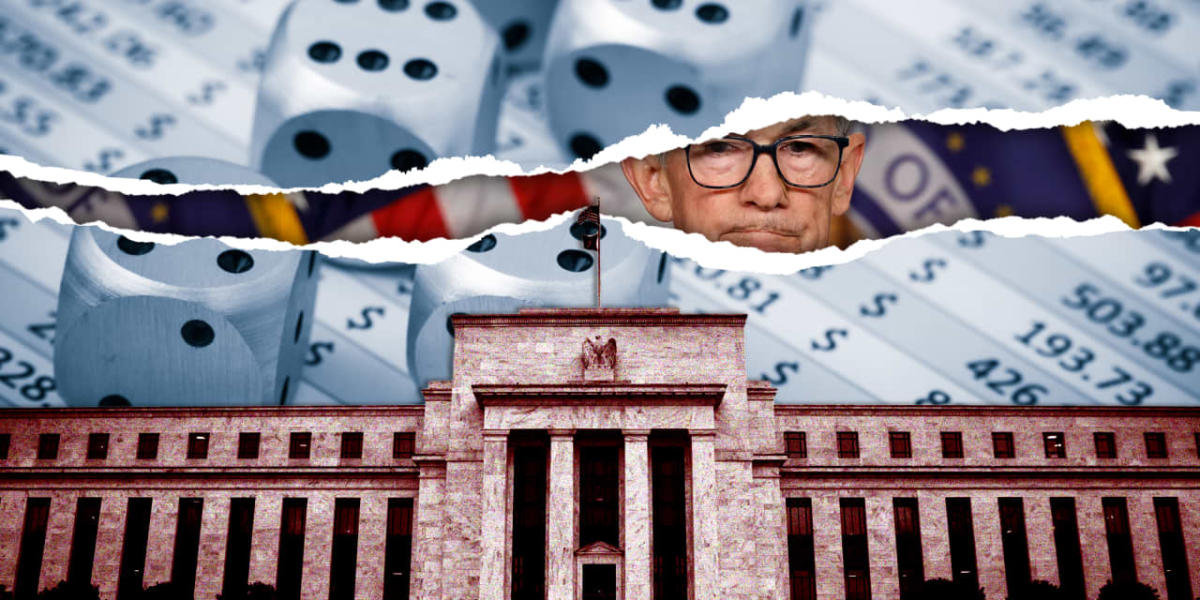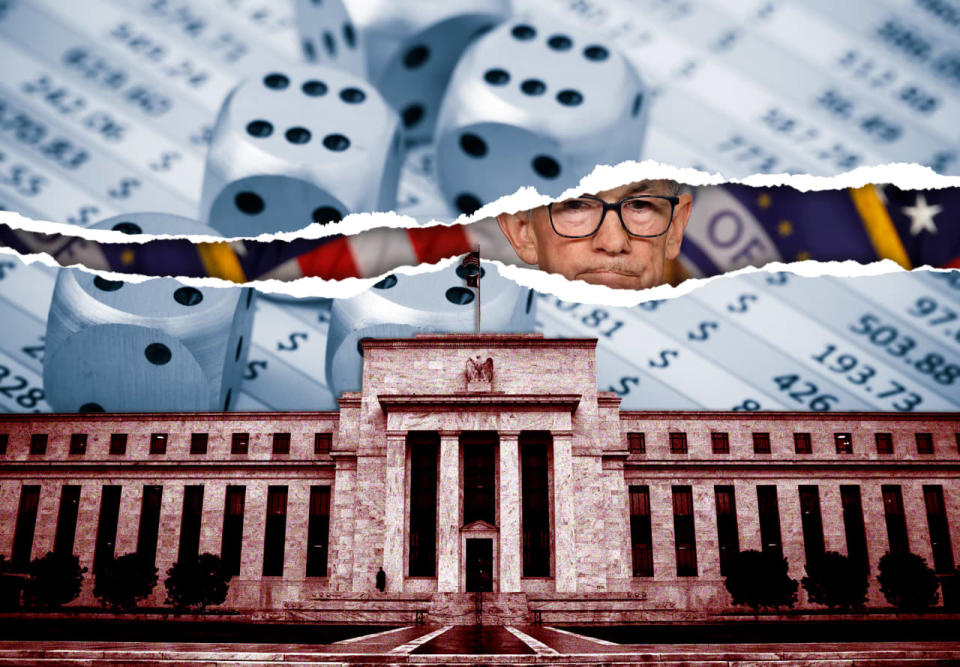

It was supposed to be resolved by now.
The Federal Reserve is virtually certain to cut interest rates when it concludes its policy meeting on Wednesday, but the magnitude of that cut is far from certain. Traders of federal funds futures have priced in a very delicate choice between a standard 25 basis point cut or a massive 50 basis point cut.
MarketWatch’s most read
Uncertainty accompanies a debate over whether a massive rate cut would spark panic or reassure investors nervous that a slowing economy could suddenly tip into recession, wrecking corporate profits and snapping the legs of a two-year bull market.
A “crazy” obsession
Over the past decade or more, investors typically came into Federal Reserve meetings with a relatively clear signal about the size of any expected rate move, Kathy Jones, chief fixed-income strategist at the Schwab Center for Financial Research, told MarketWatch in a phone interview. This time around, there is decidedly less clarity.
“That said, it’s getting crazy… this obsession with 25 or 50 basis points,” Jones said.
As of Friday afternoon, federal funds futures traders had estimated a 47% chance of a 50-basis-point cut, up from 28% on Thursday. They were pricing in a 53% chance of a 25-basis-point cut. By early Monday morning, they had estimated a 57% chance of a larger cut, with a 25-basis-point move seen at 43%, according to the CME FedWatch tool.
They have estimated that there will be cuts of 100 basis points or a full percentage point by the end of the year. Given that the Fed will meet only three more times in 2024, including Wednesday, that implies that at least one of those meetings is expected to include a 50 basis point cut.
The concern is that giant rate cuts have typically been reserved for extreme circumstances, but it’s not clear that a 50-basis-point hike on Wednesday would raise fears that the Fed knows something investors don’t, Jones argued. After all, a federal funds rate now hovering between 5.25% and 5.5% with inflation running at 2.5% leaves policymakers plenty of room to start cutting without the threat of reigniting inflation.
“I’m one of those people who says, ‘Why wait?'” Jones said. A 50-basis-point cut “at least gets us to a federal funds rate below 5%, which is still a fairly tight monetary policy.”
Advance: The Fed is likely to cut interest rates until next summer as the threat of inflation fades.
Waiting for guidance
More important in setting the tone for markets will be guidance from the Fed and its chairman Jerome Powell on the expected size and scope of additional rate cuts following Wednesday’s decision, he said.
A half-percentage point cut accompanied by a signal that further cuts are coming in 25-point increments via the so-called dot-plot forecast, which reflects individual policymakers’ rate expectations, would provide reassurance. So would Powell’s remarks reiterating that the Fed had room to cut rates early because policy remains fairly tight and inflation has fallen faster than expected.
In fact, it’s a standard 25-basis-point cut that would likely unsettle investors who fear the Fed has left rates too high for too long, Charlie McElligott, managing director of cross-asset strategy at Nomura, said in a Friday note.
Since fed funds futures traders still see a strong chance of a big move, “anything less than 50 basis points will do.” [disappoint] market prices, thus acting to adjust [financial conditions] “in a de facto ‘hawkish’ manner,” he wrote.
Lurking danger
By contrast, some market veterans argue that if the Fed were to make a big move at the start of a monetary easing cycle, investors would wonder what dangers policymakers see lurking in the economy.
In the five easing cycles since 1990, when the Fed’s rate decisions became much more transparent, policymakers started with a half-percentage point cut twice, noted Nicholas Colas, co-founder of DataTrek Research, in a note.
The first was in January 2001, when the collapse of the dot-com bubble accentuated the slowdown in business and consumer spending at the same time that the economy was clearly heading for a contraction. The second was in September 2007, when US stocks were trading near all-time highs, but tensions in the housing market heralded the beginning of the worst financial crisis since the Great Depression.
Federal Reserve Chairman Jerome Powell and other policymakers “certainly know this story,” Colas said. “Their first cut will almost certainly be 25 basis points.”
They will have the flexibility to make whatever moves are necessary after that, “but will likely be cautious about 50 basis point cuts unless labor market conditions deteriorate rapidly,” he said.
And in a note on Friday, Kathleen Brooks, head of research at brokerage XTB UK in London, offered another potentially market-negative twist on a huge rate cut: “A 50 basis point rate cut next week would be a bold move, however, if the Fed signals it will bring forward rate cuts then we could see fewer rate cuts in the future, which could take the market by surprise and weigh on risk sentiment.”
So there is clearly a range of conflicting opinions not only about what the Fed is likely to do on Wednesday, but also about how the market will react, and much also depends on how the Fed explains its decision and what it plans to do next.
Source of uncertainty
Uncertainty over the magnitude of the rate cut persists because recent economic data that investors had hoped would settle the debate turned out to be less clear.
In a speech in late August in Jackson Hole, Wyoming, Powell made it clear that the Fed’s priority now is to prevent a further deterioration in the labor market. Many analysts expected the August jobs report, due on September 6, to provide an immediate answer on the size of the cut. Instead, a softer-than-expected increase in payrolls, accompanied by a drop in unemployment, left the report in what analysts described as a “gray area.”
On Wednesday, a slightly higher-than-expected core consumer price index for August sent expectations for a half-percentage point cut into sharp relief. But a Wall Street Journal article on Thursday highlighting the continuing dilemma among policymakers over whether to start with a big or small cut appeared to breathe new life into the huge rate-cut bets, analysts said.
Read: The Fed’s “rather poor” communication is responsible for creating market doubts about the path of rate cuts
Meanwhile, stock investors shook off much of the early September gloom last week, helped by a strong rally in the tech sector. The Dow Jones Industrial Average DJIA posted a weekly gain of 2.6%, while the S&P 500 SPX advanced 4%, paring the US large-cap benchmark’s September decline to 0.4%. The tech-heavy Nasdaq Composite COMP posted a weekly gain of 6%, paring its month-to-date decline to 0.2%.
Stock index futures were mixed early Monday morning.
Direction of travel
As for investors, the best bet may be to look beyond the debate over the size of the interest rate cut and focus on the fact that a rate-cutting cycle is about to begin, a backdrop that has been both favorable and unfavorable for stocks in the past depending on the state of the economy.
“The important thing is that we know which direction interest rates are going to go,” said Schwab’s Jones. “Just knowing that the direction is lower is enough to plan the investment horizon.”
